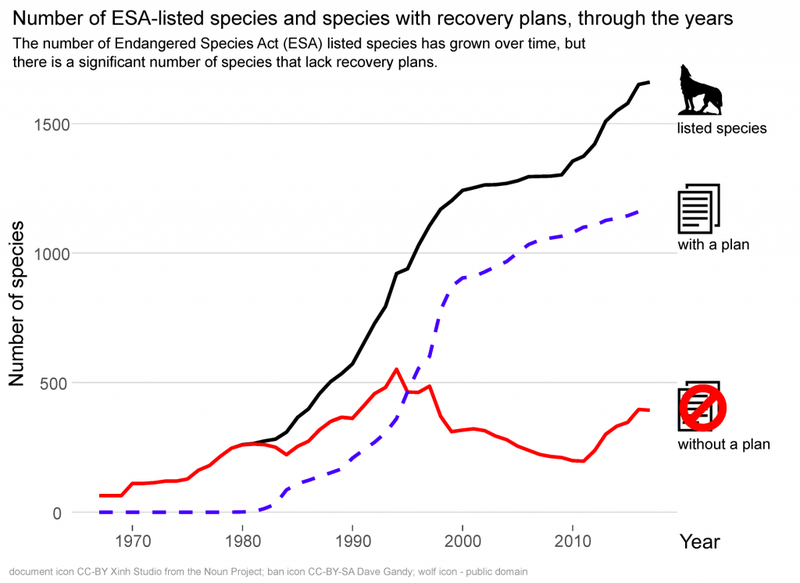

Recovery planning is an essential part of implementing the U.S. Endangered Species Act (ESA), but conservationists and government agencies recognize challenges with the current planning process. Using data from all U.S. domestic and transboundary ESA‐listed species, we quantify the completeness, timeliness, age, and other variation among ESA recovery plans over the past 40 years. Among eligible listed taxa (n = 1,548), nearly one‐fourth lack final recovery plans; half of plans have taken >5 years to finalize after listing; half of recovery plans are more than 20 years old; and there is significant variation in planning between agencies, and among regions and taxonomic groups. These results are not unexpected given dwindling budgets and an increasing number of species requiring protection, but underscore the need for systematic improvements to recovery planning. We discuss solutions—some already underway—that may address some of the shortcomings and help improve recovery action implementation for threatened and endangered species.